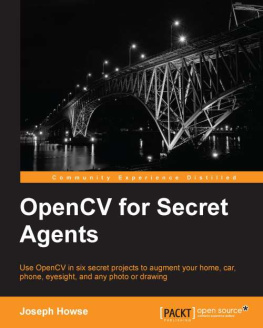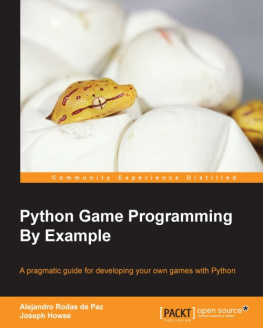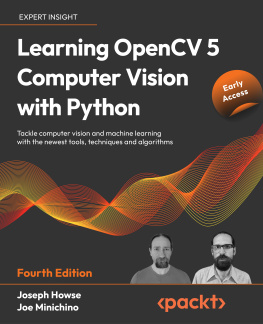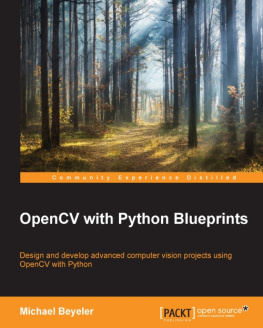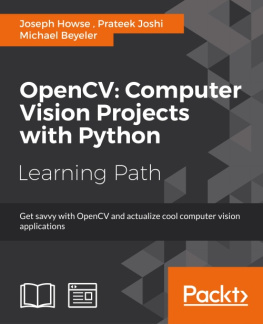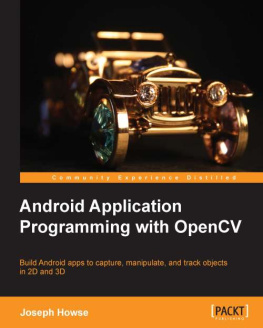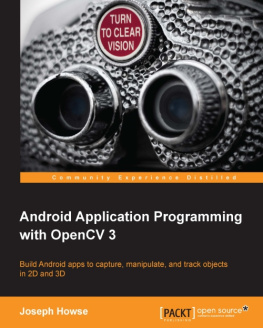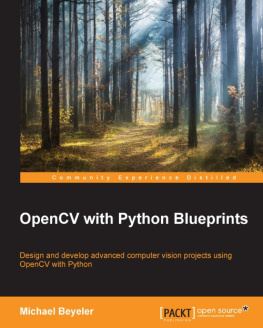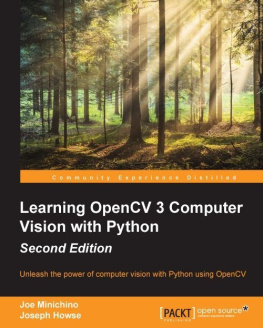Abid K.
About the Author
Joseph Howse (Joe) is fanciful. So to him, the virtual world always seemed to reach out into reality. One of his earliest memories is of watching an animated time-bomb on the screen of a Tandy Color Computer. The animation was programmed in BASIC by Joe's older brother, Sam, who explained, "I'm making a bomb. Get ready!" The bomb exploded in a rain of dots and a rumble of beeps as Joe and Sam ran to hide from the fallout.
Today, Joe still fancies that a computer program can blast a tunnel into reality. As a hobby, he likes looking at reality through the tunnel of a digital camera's lens. As a career, he develops augmented reality software, which uses cameras and other sensors to composite real and virtual scenes interactively in real time.
Joe holds a Master of Computer Science degree from Dalhousie University. He does research on software architecture as applied to augmented reality.
Joe works at Ad-Dispatch, an augmented reality company, where he develops applications for mobile devices, kiosks, and the Web.
Joe likes cats, kittens, oceans, and seas. Felines and saline water sustain him. He lives with his multi-species family in Halifax, on Canada's Atlantic coast.

I am able to write and to enjoy writing because I am constantly encouraged by the memory of Sam and by the companionship of Mom, Dad, and the cats. They are my fundamentals.
I am indebted to my editors and reviewers for guiding this book to completion. Their professionalism, courtesy, good judgment, and passion for books are much appreciated.

About the Reviewers
David Milln Escriv was eight years old when he wrote his first program on an 8086 PC with Basic language, which enabled the 2D plotting of basic equations; he started with his computer development relationship and created many applications and games.
In 2005, he finished his studies in IT from the Universitat Politcnica de Valencia with honors in human-computer interaction supported by computer vision with OpenCV (v0.96). He had a final project based on this subject and published it on HCI Spanish congress.
He participated in Blender source code, an open source and 3D-software project, and worked in his first commercial movie PlumiferosAventuras voladoras as a Computer Graphics Software Developer.
David now has more than 10 years of experience in IT, with more than seven years experience in computer vision, computer graphics, and pattern recognition working on different projects and startups, applying his knowledge of computer vision, optical character recognition, and augmented reality.
He is the author of the DamilesBlog (http://blog.damiles.com), where he publishes research articles and tutorials about OpenCV, computer vision in general, and Optical Character Recognition algorithms. He is the co-author of Mastering OpenCV with Practical Computer Vision Projects , Daniel Llis Baggio, Shervin Emami, David Milln Escriv, Khvedchenia Ievgen, Naureen Mahmood, Jasonl Saragih, and Roy Shilkrot, Packt Publishing. He is also a reviewer of GnuPlot Cookbook, Lee Phillips, Packt Publishing .

I thank my wife, Izaskun, and my daughter, Eider, for their patience and support. Love you. I also thank the OpenCV team and community that gave us this wonderful library.
Congrats to the author for this perfect introduction to Python and OpenCV book.

Abid K. is a student from India pursuing M.Tech in VLSI Design at National Institute of Technology (Suratkal). He finished his B.Tech in Electronics & Communication. He is particularly interested in developing hardware architectures for image processing and speech processing algorithms.
He started using OpenCV Python in his college days as a hobby. The lack of learning resources on OpenCV Python at that time made him to create his own blog, www.opencvpython.blogspot.com, and he still maintains it. In his free time, he used to answer questions related to OpenCV Python at stackoverflow.com, and those discussions are reflected in his blog articles. He also works as a freelancer during college holidays and even helps school students grow their interest in OpenCV Python and computer vision.

Congrats to the author and all those who worked on this book. I think this might be the first book exclusively on OpenCV Python. And thanks to the editors and publishers who gave me a chance to work on the publication of this book.
Thanks to all my friends who introduced OpenCV to me and helped me learn it.



